A well-designed website is the foundation of a thriving therapy practice. Beyond aesthetics, it represents your basecamp—a space where prospective clients feel seen, where your approach shines, and where they take their first step toward healing. Therapist website development encompasses visual design, functionality, content strategy, security, and ongoing optimization. When done right, your site becomes a trusted, effective gateway for connection and growth.
1. Define Your Goals & Client Journey
Successful website development starts with clarity. Ask yourself:
- What do you want your site to achieve?
- Inform about your specialties
- Attract local clients
- Offer teletherapy
- Generate booked sessions or resource downloads
- Who’s your ideal client?
- Job stress? Couples? Teens? ADHD?
- Job stress? Couples? Teens? ADHD?

Once goals and audience are clear, your site structure should guide visitors naturally—e.g., homepage → specialties → booking.
2. Intuitive Architecture & Navigation
Visitors value clarity and simplicity. Your main menu should typically include:
- Home
- About
- Services (with sub-pages if needed)
- Resources or Blog
- FAQs
- Contact / Book
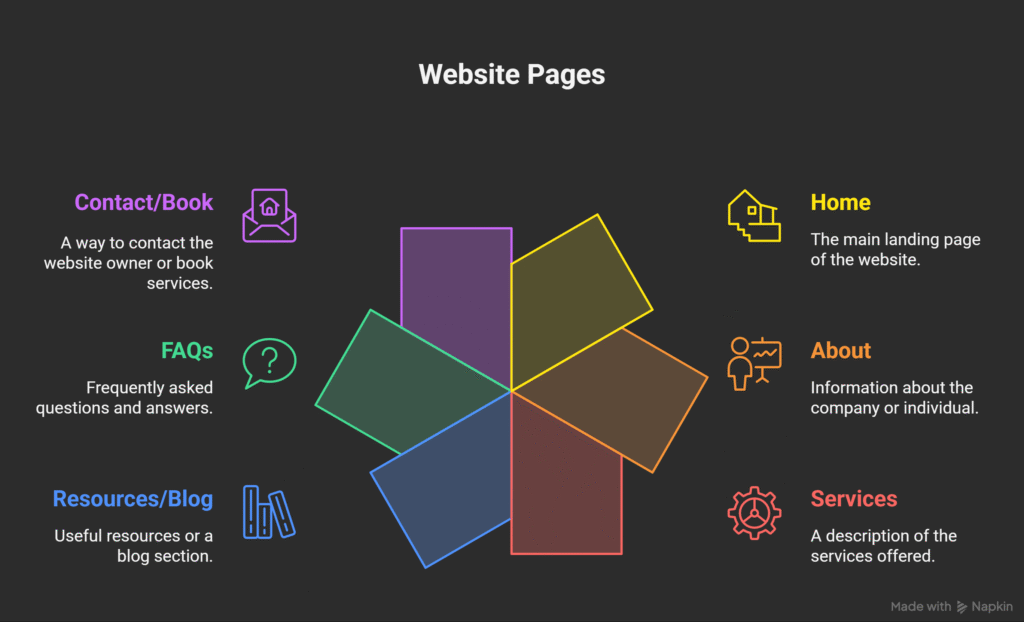
3. Effective Visual & Brand Design
Healing begins visually. Build trust and empathy with:
- Soothing color palette: soft blues, gentle greens, or warm neutrals
- Readable fonts: clear, friendly, accessible at all sizes
- Genuine imagery: real office shots, warm headshots, and nature scenes
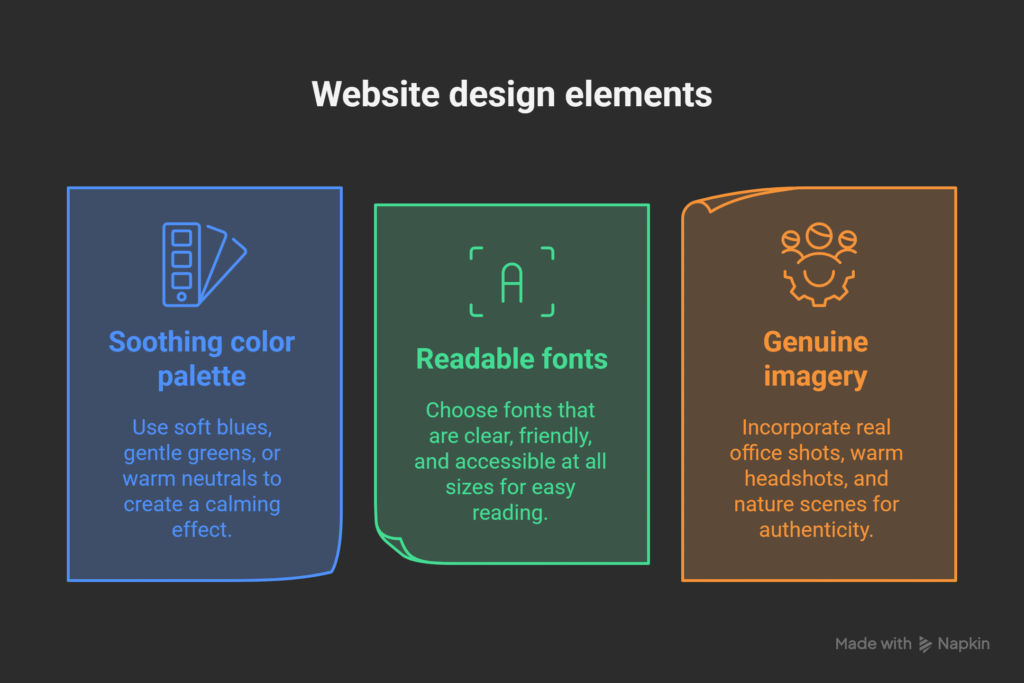
Reflect your therapeutic style and client essence consistently across pages. Authentic visuals set the emotional tone from the moment users enter.
4. Content Strategy That Resonates
Words matter. Your content should speak directly to clients’ feelings and needs.
Home Page: Start with empathy—“If anxiety is holding you back…”—then highlight your approach and invite the visitor in.
About Page: Weave professionalism with personal story—credentials and motivation behind becoming a therapist.
Services Page: Organize by need (e.g., Anxiety, Couples, Kids). Explain benefits and process, not just modalities. Learn more in “The Role of SEO in Helping Counselors Get Found Online”.
Blog/Resources: Use content to build trust and SEO traction. Posts like “How Teletherapy Works” signal your offerings AND provide valuable insights.
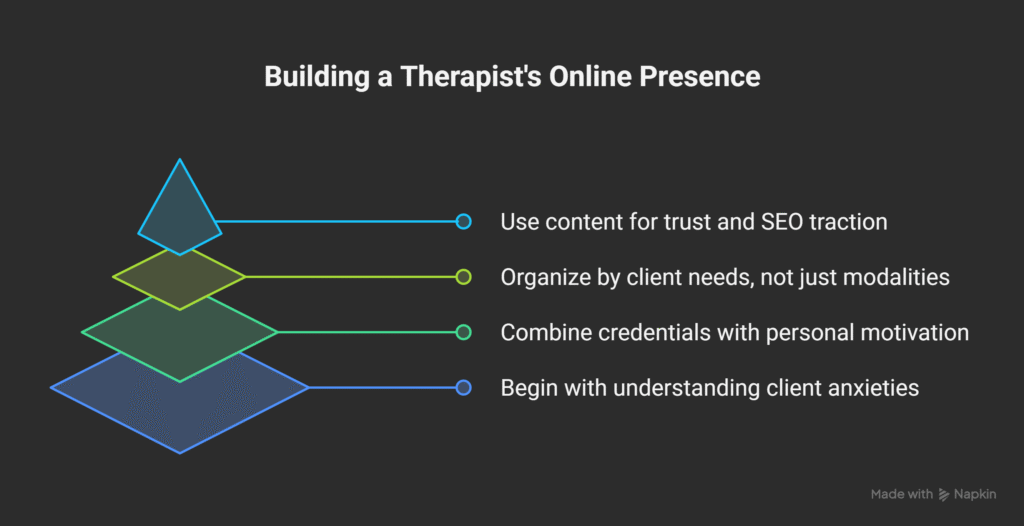
5. Integrating Secure Functionalities
Your site must be more than pretty—it needs to work flawlessly for clients:
- Online booking via tools like Calendly or practice software
- HIPAA-compliant teletherapy link with clear instructions
- Secure client portal for paperwork and session notes
- Payment integration, whether through Stripe, Square, or EHR portals

6. Mobile First & Performance Optimization
Over half of visits come from mobile devices—prioritize responsive design and fast loading.
Key steps:
- Use adaptive layouts and fonts
- Compress images
- Minimize scripts and unnecessary plugins
- Conduct mobile usability tests
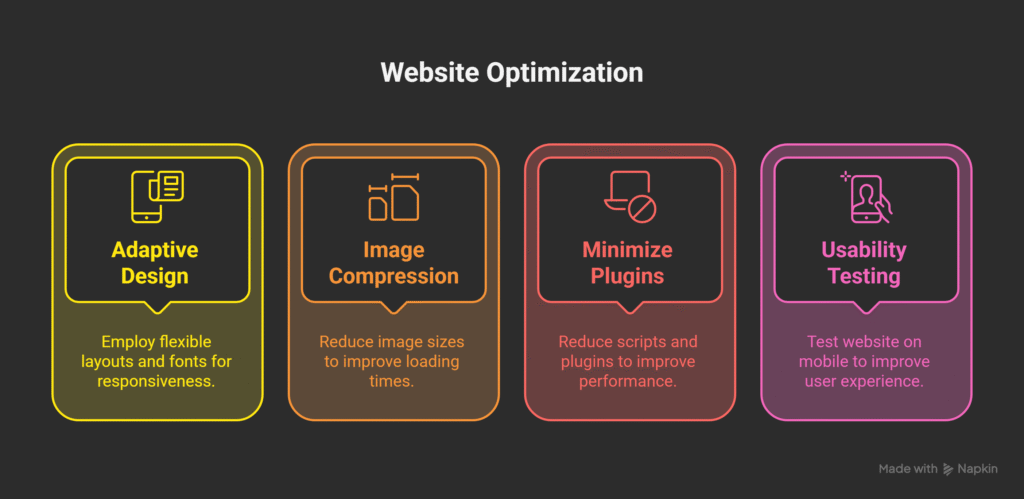
7. SEO Foundations & Local Visibility
To get found by clients, your site must be built for search:
- Use clear page titles and headings (e.g., “Online Anxiety Therapy in [City]”)
- Include alt-text on images
- Craft meta titles and descriptions with keywords and emotional triggers
- Create localized service pages if you offer in-person sessions
- Link related pages together and encourage blog connections
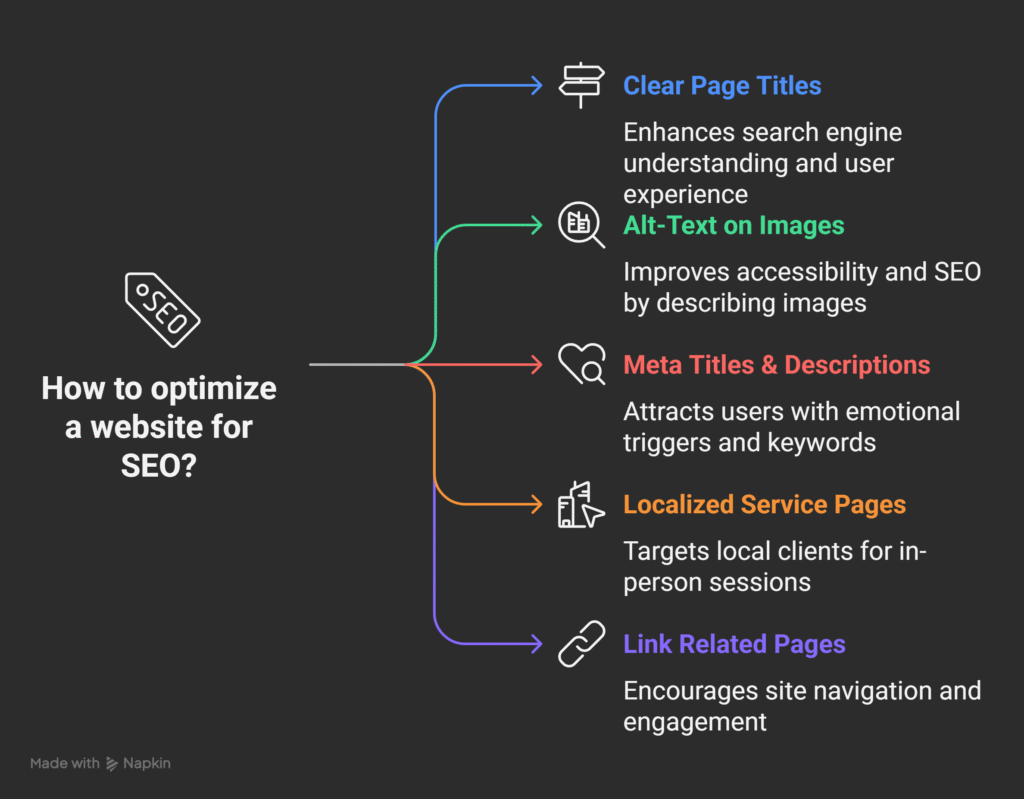
8. Trust Signals & Social Proof
Trust is built through details. Empower your site with:
- Anonymous testimonials like: “I felt seen and healed from day one.”
- Professional credentials and license numbers
- HIPAA-secure site certification badges
- Clear privacy policy and SSL padlock
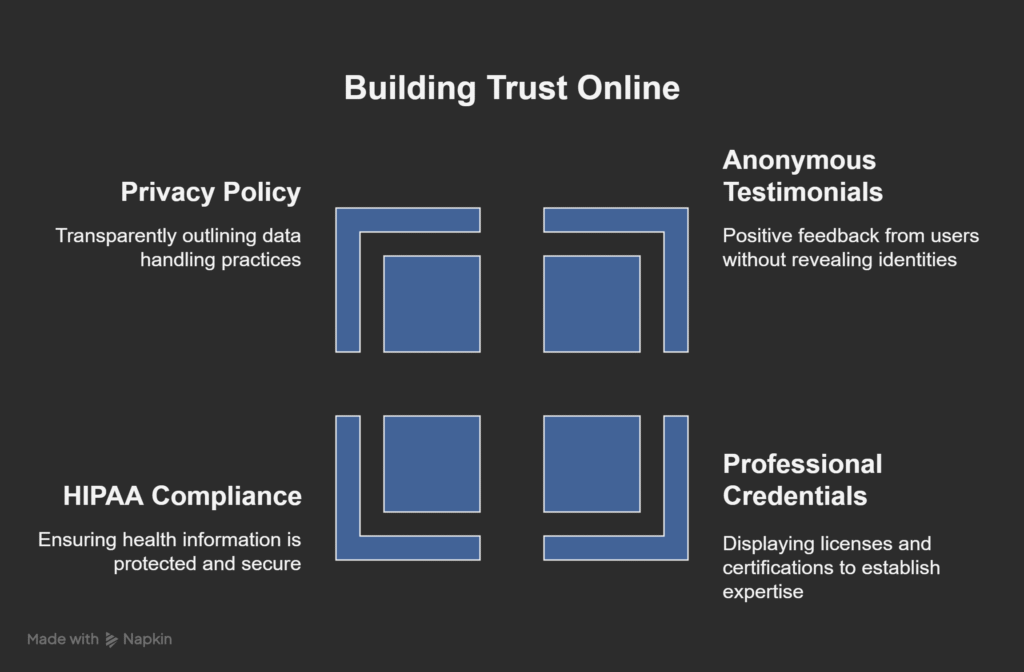
Integrating these elements communicates credibility instantly.
9. Conversion Optimization & Calls to Action
Your site should gently encourage next steps:
- Place CTAs (“Book a Free Call” or “Learn More”) above and below fold
- Include CTAs after testimonials and resource sections
- On blog posts, recommend related service pages
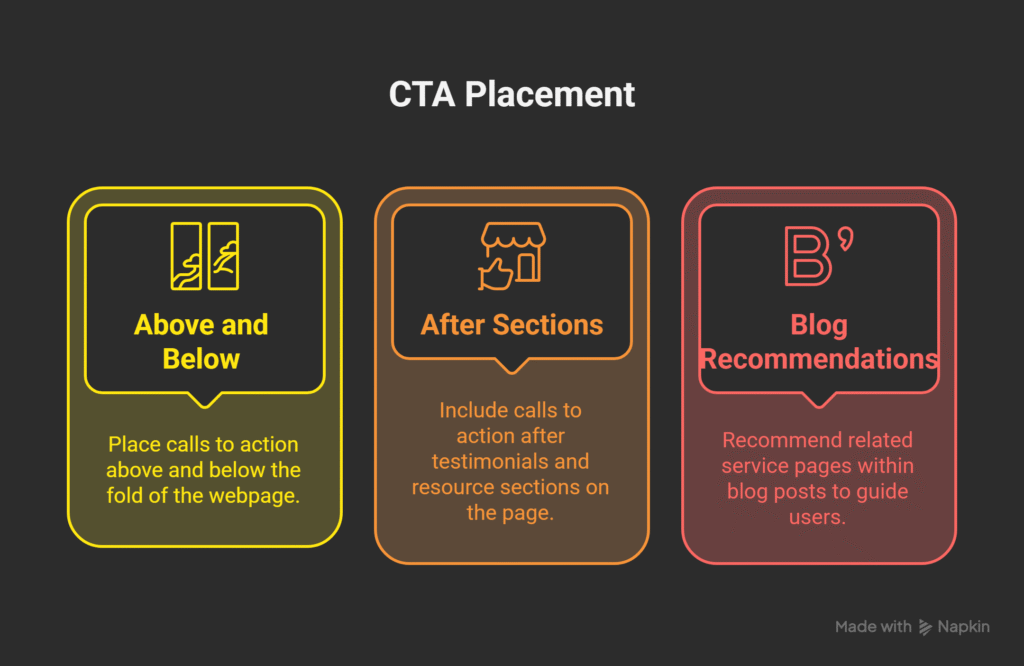
You’re not selling—you’re supporting the visitor’s chosen journey.
10. Ongoing Maintenance & Analytics
Website development doesn’t end at launch:
- Update content and visuals as needed
- Run regular backups and software updates
- Monitor site performance and uptime
- Use analytics to track user flow, conversions, and content effectiveness
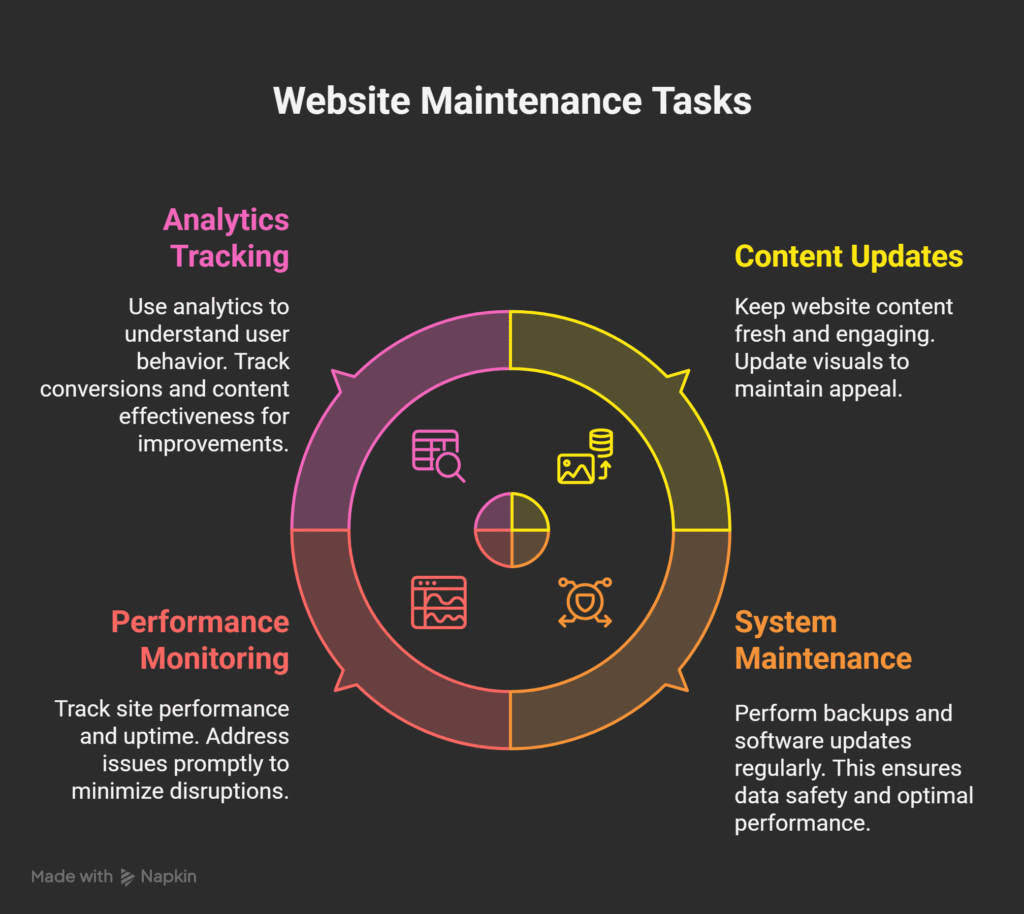
By analyzing blog performance or form submissions, you can fine-tune UX and content strategy.
Conclusion: A Website That Reflects Your Care
A therapist website isn’t just a digital space—it’s an extension of your therapeutic environment. It welcomes, informs, and supports clients before they ever book. By focusing on empathetic design, secure functionality, strategic content, and performance, you create a website that feels like a warm introduction to your work.
Ready to build or update your site? Dive into expert support with Mental Health IT Solutions for customized, therapist-focused development that truly reflects your care.






